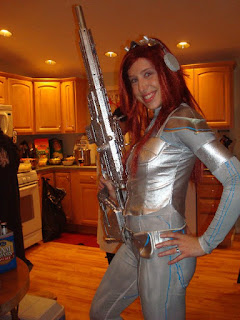As things continue to chill out here in the Northern Hemisphere we get to indulge a bit more in comfort foods, particularly those that take their sweet time in the oven and make your living space come alive with spice-laden aromas. The following recipe is every bit that sort of comfort food and will have savory scents emanating from your oven for hours as it slowly progresses towards golden crispy perfection.
I found the original version of this (pictured above) a while back on the brilliant Smitten Kitchen and, after a bit of experimenting, came up with a few modifications to both the protocol and the ingredients (bacon, bacon, and bacon). Seriously, this blog has been up far too long without a single mention of bacon, for which I apologize.
 |
Though this is one of the more labor-intensive recipes that have been featured on the blog, the work is entirely front-loaded and is mechanically simple, if potentially very time consuming. If at all possible, draft one or more friends into the prep work to cut down on the time spent chopping and soaking. More than a bit of elbow grease is involved, but it's very much worthwhile.
Difficulty: Intermediate
Availability of Ingredients: Most Common
Gadgetry: Optional
Feeds: 2-4 nerds
Time Till Noms: About 30 minutes of preparation, then 1.5-2 hours of baking
Required Equipment: A cutting board, a sharp knife, a large bowl, a ceramic mug, a baking dish (can be a casserole dish, a rectangular baking pan, or a Pyrex brownie pan), a frying pan, a few clean towels (paper or cloth)
Optional Equipment: A mandoline, a mortar and pestle
Ingredients
4-6 medium-to-large potatoes
1/4-1/2 pounds (110-220g) of bacon
1 large shallot
1/2 teaspoon of each of the following spices: oregano, rosemary, thyme, parsley
salt & pepper
1 Tablespoon of oil
1 Tablespoon butter
1 large, thinly sliced clove of garlic (optional)
8-12 ice cubes
*Pre-heat your oven to 375 degrees*
Step 1: Fill your large bowl with cold water, then add your ice cubes and set the bowl aside. While the cubes go to work slowing down the molecular jostling of the water, wash each of your potatoes. You can certainly peel them if that's your preference, but I recommend leaving the skins on for extra crunch. If you're using a mandoline, set the blade to cut at 1/8'' (3mm) thickness. If you're using a knife, you'll want to slice the potatoes as close to 1/8'' (3mm) thick as you can. Potatoes at 1/8'' (3mm) thickness should be floppy, but not completely translucent. The idea is you want them to be crunchy, but also capable of being stacked vertically (more on this in a minute). Slice the potatoes.
| Dried out and ready to be loaded up with butter |
| Slice and pry the shallots apart until they look like the pile on the left |
| If it looks like this you're ready for the oven |
Step 4: Put the baking dish in the oven and allow the potatoes to cook for an hour and fifteen minutes. After you do this, set a timer for 1 hour.
Step 5: After an hour has passed, break out your bacon. BACON! Coarsely chop the bacon into 1/2'' (1.2 cm) pieces, then toss in a frying pan. Fry the bacon until it's just beginning to bubble and turn up (it should still be pink and floppy at this point). When the bacon reaches this point, remove the potatoes from the oven. Add the bacon and any remaining spices (thyme, rosemary, parsley, etc) atop the stacked potato slices. Try to arrange the bacon and herbs as evenly as possible. Return the baking dish to the oven for another 20-30 minutes.
Step 6: Remove golden brown potatoey bacony goodness from the oven and enjoy!
| Voila! Time for noms! |
FAQs
White potatoes are great and all, but can this recipe be done with sweet potatoes?
Definitely. In fact, you can incorporate any number of root vegetables in lieu of, or interspersed with, the potatoes. Turnips, sweet potatoes, taro, and parsnips (or even albino beets) will all serve wonderfully; just prepare these as you would white potatoes.
Can I add more to the oil/butter mixture and make it more of a sauce?
Of course. Depending on the root vegetables you choose to use in this recipe you can integrate other liquids into the mixture to kick up the flavor. For example, if you were trying to make this dish with sweet potatoes you could add some balsamic or apple cider vinegar to the mix. Or you could put a dash of chili or, if you wanted to get really fancy, truffle oil to imbue the potatoes with that essence. I'd recommend doing so in the last 30 minutes of cook time to prevent these flavorful additions from evaporating entirely.
A mandoline looks so badass. Is it worthwhile to pick one up?
Here's the thing: mandolines can be very handy to have around and, thankfully, they've become popular enough that you can get one at a reasonable price at many home goods stores. However, unless you do a LOT of lateral slicing (making dishes like these or, say, French fries from scratch) you can do without one in your kitchen. As effective as they are, they are often difficult to clean and must be used with extreme care. Those blades are no joke. So I'd say make an honest appraisal of how much you'd make use of this little device before running out to get one. Long story short, you won't see a mandoline entry in the Kitchen Codex. On most occasions a good sharp knife will do just as well.
Can I do this with turkey bacon?
Can I do this with turkey bacon?
You can do it with any cured meat or no meat at all if you wanted. For all my clamoring on about bacon, the potatoes are really the star of this recipe.











